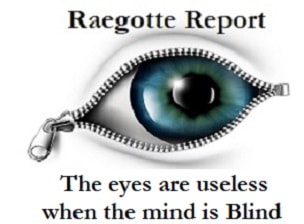Recently, Brit Hume, the sober and understated Fox News commentator, voiced the thoughts of millions when he said, “I think its time to consider the possibility… that this lockdown, as opposed to the more moderate mitigation efforts… is a colossal public policy calamity.”
The financial extent of the calamity was quantified by economist Scott Grannis when he observed that “almost overnight, we have wiped out all the net job gains of the past 14 years.” He made that comment on April 12 and the losses aren’t over yet. Grannis bluntly concluded that, “The shutdown of the U.S. economy will prove to be the most expensive self-inflicted injury in the history of mankind.”
The loss of liberty incurred as a result of shutdown is not as easily quantifiable, but is no less significant.
Epidemiological “models” have provided the scientific basis for this large-scale abrogation of personal and economic liberty. Now that the models have been shown to be grossly inaccurate, some are demanding accountability.
In a recent op-ed, Georgia congressman Jody Hice wrote:
“Public health experts, scientists, and government officials all warned that millions would die unless strict measures were put in place… So, we willingly took unprecedented steps to save the most vulnerable among us, even at the cost of wreaking unparalleled economic damage. The experts said it was necessary, that the coronavirus was especially deadly, and our medical systems were in danger of being overwhelmed… Now, weeks into the pandemic, the dire outcomes foretold by experts have failed to come to pass. The models used to justify the closure of society have been shown to be wildly inaccurate… We need to examine why the models failed us, why their creators have been so far off the mark, and why these projections were used to justify policies that have resulted in unparalleled economic disruption.”
It is worth having that discussion. In retrospect, and despite their air of authority, the experts never had enough knowledge about this virus to make reliable calculations about the future.
But the real problem with the models weren’t that they proved to be false, but rather that they were promoted with false certitude.
“I confess that I prefer true but imperfect knowledge,” economist Friedrich Hayek once said, “to a pretense of exact knowledge that is likely to be false.”
Hayek’s remark, given as he was accepting the Nobel Prize in 1974, was that thinking of economics as a “science” might lead to “a pretense of knowledge,” the idea that any one person might know enough to engineer society successfully, unmindful of unintended consequences.
But Hayek went on to note that his reasoning applied to the physical sciences as well. Full Story - Nicholas J. Kaster - American Thinker
Will the Covid-19 PsyOp succeed?
What’s really going on? A bare knuckles political-ideological battle for what our future will be like
Five weeks into the country’s shutdown due to the coronavirus crisis, however, it looks unmistakably like a big PsyOp – a psychological operation designed to entrance people for the purpose of hidden agendas. The whole thing, in fact, has morphed into what it was intended to usher in – a bare knuckles political-ideological battle for what our future will be like.
There’s a great quote I heard on Friday from a small business owner. She said “I’m no longer concerned about losing my life. I’m concerned about losing the life I've built.” Read More
Modeling COVID-19 and the Lies of Multiculturalism
See what multiculturalism and inane computer models have wrought
Perhaps the best thing that could come out of this entire debacle and turning America into a police state — where people are arrested for going somewhere in their cars and never leaving their cars — should be a total disdain for and disbelief in computer models.
Computer modeling can be incredibly useful, particularly when you’re modeling physics: ... the accuracy of the model depends on how much you put into it and how much of the real factors on that day, in that place, you can put in. [We have] blinded ourselves to one of the most important factors when modeling disease in human populations: culture. Read More


